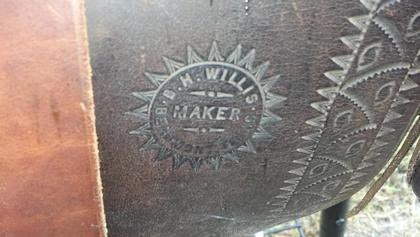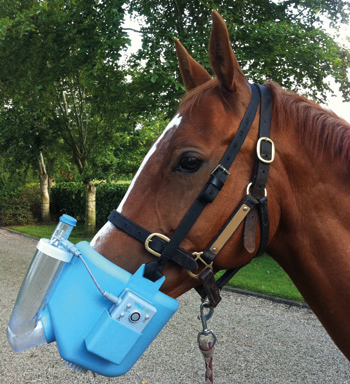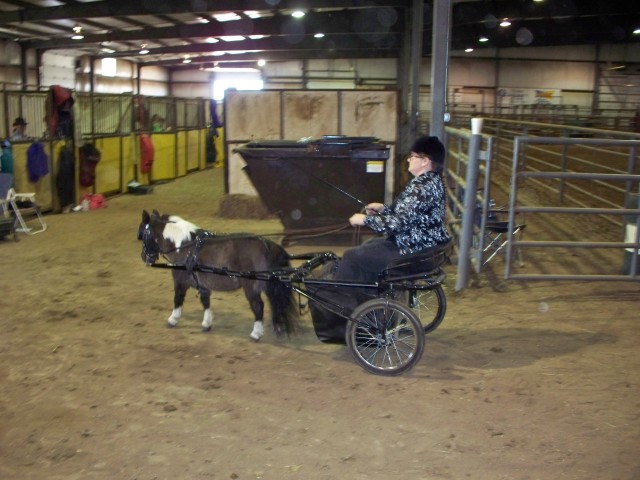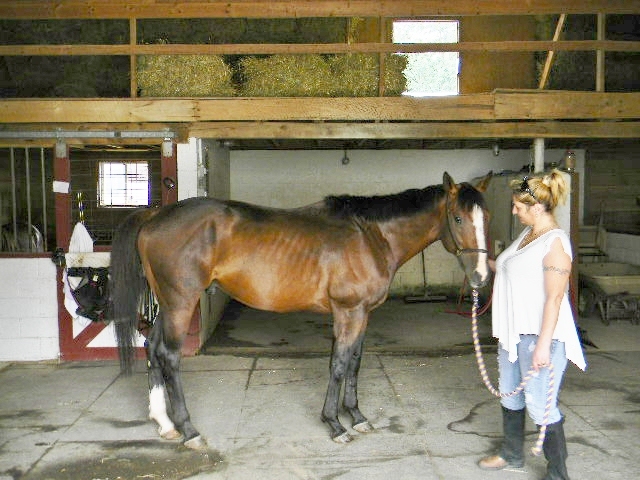QuestionFirst, let me start off by saying thank you for taking the time to give such an in depth answer to my concerns. I know it is difficult to answer a question not knowing all the background i.e. not knowing if the horse needs its teeth done etc. I do know, however, about her background and she was trained without any training devices whatsoever and just using a plain snaffle. I still maintain communication with her only former owner. Even though she is only 5, she is very mellow and responsive, if given the right cue. Everyone that I have talked to about her agrees that she is the perfect horse to start out on. I do understand what you are saying with respect to a correct match as I have had a horse where that was an issue. I think that part of my issue is feeling tense as I had a fall prior to buying her and it has taken me a long time to get this far. Even at this point, I cannot trot on the correct diagonal going to the left as it is very uncomfortable and painful for me and I am working with a chiropractor and working out to regain my muscle strength. I mention being tense because I do believe that although it is invisible to the naked eye, I am tense in my seat and I know my mare senses this. She is ever patient with me despite this. I will try the deep seat you mentioned and Yes I do start asking with my hands. I usually walk her about 5 - 10 min and then start with a forward trot on a looser rein. (I do have my reins marked!!!) I then do serpentines and transition work, moving her haunches, leg yields, shoulder in, haunches in, but again, most of the time not getting the collection that I seem to see on most horses. Our canter work is a work in progress. She is not balanced and as a result is fast. I try to work her on circles for canter work. Her trot is very nice and consistent and we do well in that, but still working on slitting trot but have gotten to the point where she is collecting and her topline does come up, however, I sense that she rushes in sitting trot. I have started doing yoga again and try to maintain deep breathing to keep me relaxed. If you have any other suggestions I would be very happy to hear from you again.
-------------------------------------------
The text above is a follow-up to ...
-----Question-----
I am 50 and have a 5 year old Thoroughbred. I have owned her for a year. Previous to this I did Western Pleasure. I started Dressage about a year ago. When I bought my horse, she was training 1st level and on the bit. Due to my inexperience, I have not been able to maintain her on the bit during this last year. I am finally starting to get the feel of the reins (this took a long time as in Western Pleasure, of course, there is not contact and I would let the reins slip out of my hands)and according to my coach, she says my seat is correct. But, I am not able to maintain my mare on the bit and I am getting very frustrated by this and I am guilty of pulling on her when I get frustrated (which happens about every 2 months and then of course I feel very guilty). It is obviously something I am doing or not doing as when my coach sits on her, she immediately goes on the bit and collects. I am trying to learn sitting trot and from there try to advance and of course, it would be so much easier if she were on the bit. I must add that I love my horse and have wanted a horse all my life and only got into horses when I was 40. I spend a lot of time reading, watching videos, working out, watching clinics and doing everything I possibly can to achieve my goals as I am limited by time due to my age. I am in a hunter jumper barn and do not have access to many dressage coaches and am limited somewhat by the cost. Can you help with any suggestions of how I can achieve collection???
-----Answer-----
Dear Teresa:
It is commendable that you are taking ownership of the difficulty that you are experiencing with your mare - though I think the burden needs to be shared. You indicate that your mare was maintaining contact when you first got her and that she will stay in frame on the bit when your coach rides her. Consider a few possibilities:
1. What kind of training aids were being used on your mare before you bought her? I've seen horses that look perfectly schooled with no gimmicks or gadgets but what often goes unseen is that the horse is schooled in a training martingale or even in a tie down.
2. You shouldn't expect to be able to ride as well as your coach. That's why he/she is a coach.
3. Some horses are not good matches for newer riders or for riders like yourself who are changing disciplines. I once had the privilege of riding Julio, an Olympic dressage horse owned by Innez Profre-Credo- an Olympic rider and FEI judge. Innez could ask that horse to do anything - I consider myself to be a fairly accomplished equestrian but it was all I could do to maintain a balanced and straight walk, trot and canter. He was a very complicated horse to put together - requiring precise timing of multiple aids in exactly the right sequence and delivered in exactly the right place.
The point that I am trying to make here is that while you see your own experience (or lack thereof) as the basis of your woes- the problem may be more complex than this.
Having considered these points - I would think less about collection than I would about the timing of your aids at the working trot and canter as well as the walk - which is far too often underestimated. Keeping your horse on the bit isn't something that only occurs in collected movements.
Think about the timing of your aids - do you begin with your hands? If so - you need to stop. Asking a horse to come underneath himself and carry a round "on contact" frame begins with your seat and legs - not your hands. Sit deep in your saddle- think about trying to make yourself heavier- sit up and let gravity be your friend. At the same time, close your legs (be subtle) around your horse's barrel and then ask for a half halt. You should always be able to feel your horse's mouth at the end of your reins - use your fingers (do this at the walk to begin) to gently squeeze (an imperceptible jiggle) the reins alternating side to side until your horse responds by dropping her nose and giving to the contact. This is NOT a see sawing motion! Someone on the ground should be almost unable to see that you are working your horse's mouth. Do not throw your reins away, but maintain the contact - simply stop the squeeze. If she begins to poke her nose out again - repeat the process. Help yourself by placing some electrical tape on your reins at the spot where you need to hold them to have correct contact at the walk, the trot, and the canter - use different colours for the different gaits (of course, this is for schooling only). Your reins will be longest at the walk and shortest at the canter.
I hope this helps.
Best wishes.
S. Evans
AnswerDear Teresa:
You are very welcome, it was kind of you to write back to say so.
Most young horses are "rushy" at the canter - so don't beat yourself up over that issue. She will find better cadence once she develops her balance and strength. It sounds like you are doing things right on that front.
It is interesting that you say you experience pain posting on the left diagonal. Since the movement is excactly the same, simply rising and sitting with the opposite shoulder- I'm not sure why you would be experiencing no pain one way but pain the other way. Since it is the movement of the horse that really should be naturally allowing you to rise and to fall, I wonder if this doesn't reflect an irregularity in her gait. Pehaps she is stronger and more balanced to the right than to the left and you are having to work to rise on the left diagonal.
To help you to regain some of that relaxation (and this will also help you to sit deeper in your saddle) try removing your irons for all of your walk and trot work.
You might also want to revisit your saddle itself. I have had some saddles that I thought were just great - from established makers like Stubben, County and Passier. I'd had them custom fitted to my horses - re-stuffed every two years - you name it. Like I said, I thought they were good (and they were quite comfortable for my horses) but in several cases, they did not fit my body type and I found I had been struggling against my tack. I finally invested in a semi-custom County that has a deeper seat and shorter flaps (I'm only 5'3" so you can imagine how long a standard flap was for my leg!). I also got rid of the knee roll completely and have a thigh block instead. Anyway, just a thought.
You might also consider using a schooling martingale (also simply called a ten ring). You'd mentioned that on occassion you feel that you are getting a little grabby on her mouth. A schooling martingale is NOT a standing nor is it a running martingale. It attached to the girth in the same way but features a neck strap with up to ten rings situated at various positions. By running your reins through each of the top rings- it will help to keep your reins at the correct angle to her mouth regardless of where you move your hands. Do not use the lower rings as they are restrictive and are used for schooling difficult horses in the hands of a skilled porfessional.
The best thing I see in your case is that you love your horse, you get along with her and you are motivated to find a solution. Remember too that you haven't been at this discipline for all that long and the skill will evolve- it won't appear. Dressage is a difficult task master.
Best wishes to you.
S. Evans

 orphan foal
Question
Angel
hi, i recently aquired an orphaned foal
orphan foal
Question
Angel
hi, i recently aquired an orphaned foal
 B.H. Willis Maker saddle
Question
Saddle name Top view saddle
I am
B.H. Willis Maker saddle
Question
Saddle name Top view saddle
I am
 remedy for caugh and cold
Question
nebulizer
hello maam. what is the remed
remedy for caugh and cold
Question
nebulizer
hello maam. what is the remed
 Mini Horse Training
QuestionToughy the mini
QUESTION: Hello (again!)
Mini Horse Training
QuestionToughy the mini
QUESTION: Hello (again!)
 Gelding a 4 year-old ex-racehorse
Questionsplash
QUESTION: In April of this year I
Gelding a 4 year-old ex-racehorse
Questionsplash
QUESTION: In April of this year I